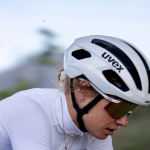Since the passage of Sarbanes-Oxley, conventional wisdom holds that a company needs to produce annual revenues in excess of $200 million to offset the cost of being a public company. Since the burst of the Internet bubble in the late 90s, it has been widely accepted that a company needs to produce profits for more than a year before pursuing an IPO. It appears that crocs footwear will break with that conventional thought in their pursuit of an Initial Public Offering.
In an S-1 filing with the SEC on Monday, crocs, inc. indicated that it will enter the public market with about $36 million in revenues in the first six months of the year. Coupled with a backlog of $20.8 million at the end of the second quarter, and the heavy first half focus for the crocs brand, revenues for the year would have a hard time getting to the $200 million milestone. Preliminary unaudited results for the second quarter indicated sales of approximately $25 million, or approximately 1.5 million pairs of crocs footwear.
For the first quarter ended March 31, crocs saw net sales jump more than ten-fold to $11.0 million from just $1.0 million in the year-ago period. Gross margins surged nearly 34 full points to 62.4% of sales from 28.7% of sales in Q1 2004. The company cut SG&A expenses as a percentage of sales to 37.4% versus 131% of sales in the prior-year period. The result was $2.4 million in net income in Q1 2005 versus a net loss of $1.0 million in the same period last year.
The company has not indicated the number of shares to be offered or an offering price, but the S-1 suggests a total target of more than $145 million to be raised in calculating the registration fee.
crocs was organized as a limited liability company in Colorado in 1999, converted to a Colorado corporation in January 2005, and was reincorporated in Delaware in June 2005.
crocs, which expects to be listed on the Nasdaq exchange under the symbol CROX, saw its revenues increase ten-fold in the most recent full year and the first quarter of 2005. The first quarter benefited from the June 2004 acquisition of Foam Creations, Inc., which has “developed and manufactured consumer products from specialty resins since 1995.”
crocs, inc. has been marketing and distributing in the U.S. under the crocs brand since November 2002. The company acquired Foam Creations, including its manufacturing operations, product lines and rights to the proprietary closed-cell resin for a total cash purchase price of $5.2 million and the assumption of $1.7 million of long-term debt. To fund the purchase of Foam Creations, crocs issued $5.5 million of preferred securities in connection with the acquisition.
crocs, Inc. has a $5 million revolving line of credit, and is currently tapped out on the line. The revolver must be repaid upon completion of the IPO.
The company indicated that they used a portion of the proceeds of borrowings under the credit facility to fund the distribution of $3.0 million in cash to members as of December 31, 2004 of its predecessor limited liability company. crocs also used $1.3 million for the purchase of its manufacturing operation in Mexico and associated operating assets in April 2005 and $700,000 for working capital purposes.
crocs has seven models of footwear in 17 colors. The company said they expect to introduce two new models and four additional colors in 2005. crocs increased production capacity from 70,000 pairs per month in June 2004, manufactured at a single Foam Creations facility, to over 1.2 million pairs per month in July 2005, manufactured at six facilities located around the world.
The company said they distribute product through over 4,700 store locations domestically and in over 20 countries worldwide. They also sell directly to consumers through the Internet and through several company-operated kiosks. The companys ten largest retail customers accounted for approximately 39% of revenues in the first quarter ended March 31, 2005, with Dillard's accounting for approximately 12% of total revenues.
crocs footwear represented approximately 88% of revenues in the first quarter ended March 31, 2005. Sales of the Beach model accounted for approximately 82% of total footwear revenues in the period.
In the three months ended March 31, 2005, third party manufacturers produced approximately 64% of footwear units, with one manufacturer producing approximately 51% of the total. crocs are manufactured in China, Florida, Italy and Mexico. In the first quarter, crocs produced approximately 36% of its footwear production at its Canadian facility.
crocs reported in the S-1 that its independent auditors “identified material weaknesses” in its internal control over financial reporting. The concerns revolved around crocs financial closing and reporting process, its inventory costing and tracking methodology, the documentation supporting its accounting records, and the contemporaneous documentation of significant, non-routine transactions. The filing said that those identified weaknesses were based on crocs failure to accurately account for complex transactions, a failure to monitor and apply new and emerging accounting principles generally accepted in the U.S., a lack of formal processes related to the consolidation of financial information and the financial statement preparation process, and the companys failure to reconcile its accounts in a timely and accurate manner.
To help rectify these issues, crocs expects to use approximately $2.0 million of the net proceeds from the IPO to upgrade its financial reporting systems and to implement new information technology systems.
crocs said they intend to use the remainder of the net proceeds from the IPO for working capital and general corporate purposes.
| crocs, inc. | ||||||
| Full Year and First Quarter Results | ||||||
| In $ Millions | Full Year | First Quarter | ||||
| 2004 | 2003 | Change | 2005 | 2004 | Change | |
| Total Sales | $13.5 | $1.2 | 1061% | $11.0 | $1.0 | 1026% |
| Shoes | $10.3 | $1.2 | 780% | $9.7 | $1.0 | 896% |
| Other | $3.3 | $0.0 | n/a | $1.3 | $0.0 | n/a |
| Gross Margins | 47.0% | 23.5% | +2350 bps | 62.4% | 28.7% | +3370 bps |
| SG&A | 58.6% | 126.3% | -6760 bps | 37.4% | 130.7% | -9340 bps |
| Net Income | ($1.5) | ($1.2) | +24.5% | $2.4 | ($1.0) | vs. loss |
| Diluted EPS | ($15.5) | ($13.4) | +15.4% | $16.0 | ($9.7) | vs. loss |
| Inventories* | $2.4 | $0.4 | ||||















